








The magazine of the art-form of the photo-essay

June 2016 issue
by Erberto Zani



“A free, really high quality photo-essay magazine. Fabulous!”
Stephen Fry. British actor, writer and film & documentary maker
Black World is a reportage on illegal mineral extractions created as a tryptych: three
continents (South America, Africa, Asia), three countries (Colombia, D.R.Congo, India),
three illegally extracted minerals (gold, coltan, coal) and three causes that lead to
criminality.
In Colombia, in a remote area of Antioquia, a community of gold miners has been
struggling to fight for its own existence for years, asking the government to legalize the
mine, amidst the dangers of working underground with inadequate equipment and under
definite threat of being killed by paramilitary groups.
In D.R.Congo, the absence of government, the division of power between different
military groups and the intrusion of shameless and unethical foreign interests have caused
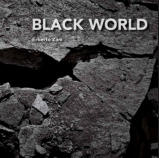
a complete military arming of the economy and a real marketing of violence. In this chaos the natural resources,
particularly coltan, become oxygen for the smouldering embers of war.
In India, the population of the small village of Bokohapadi is forced to steal its own coal found underground. This is
because of industrial-scale extraction projects run by government-aided companies, which refuse to acknowledge or
compensate the rightful owners of the land.
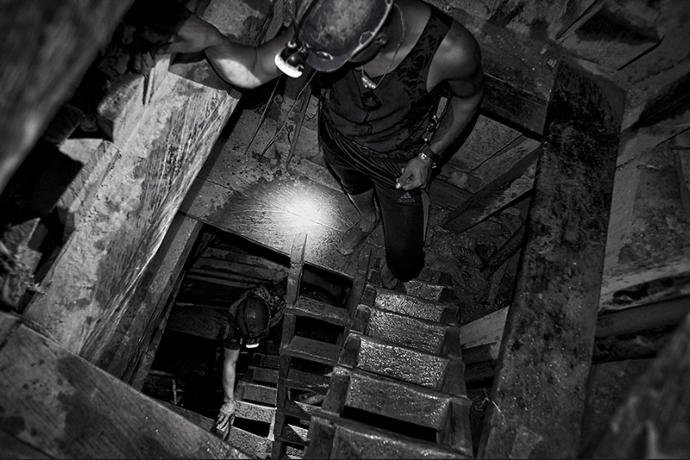
Colombia. Carrizal mine. The mine has a vertical structure. A labyrinth of steps and tunnels that become increasingly
narrow when descending. The steps are slimy and slippery from the mud and water that spill out from the walls of the
tunnels. The only light is by torches attached to the miners’ helmets.
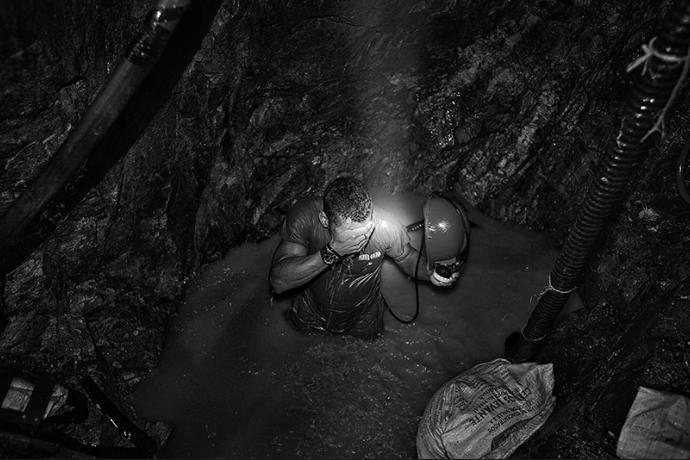
Colombia. Carrizal mine. The water cannot be pumped out and the mine quickly begins to flood. Inside the tunnel the
water level quickly rises and the miners try to unblock the suction tube with their bare hands.
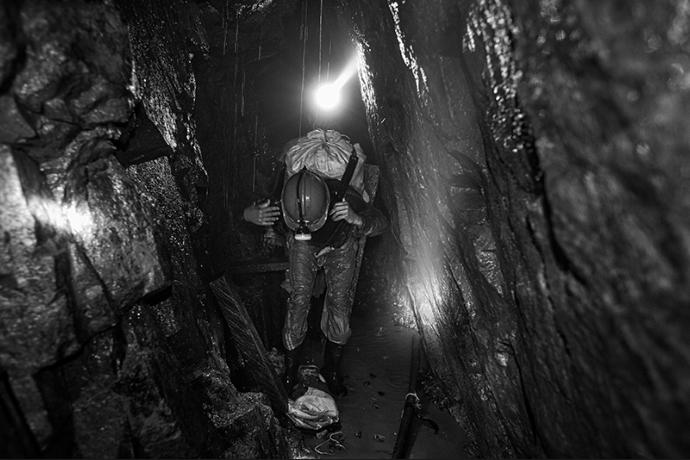
Colombia. Carrizal mine. At a depth of 260m rocks are dug, searching for gold. The rocks are put in sacks weighing
75kg when full, and are carried out on shoulders.
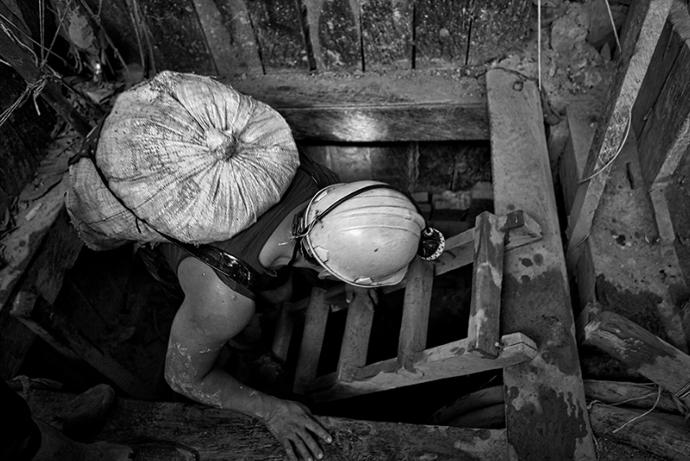
Colombia. Carrizal mine. Miner comes outside with a sack of rocks: everyday workers descend over 500 meters in
depth up to 7 times.
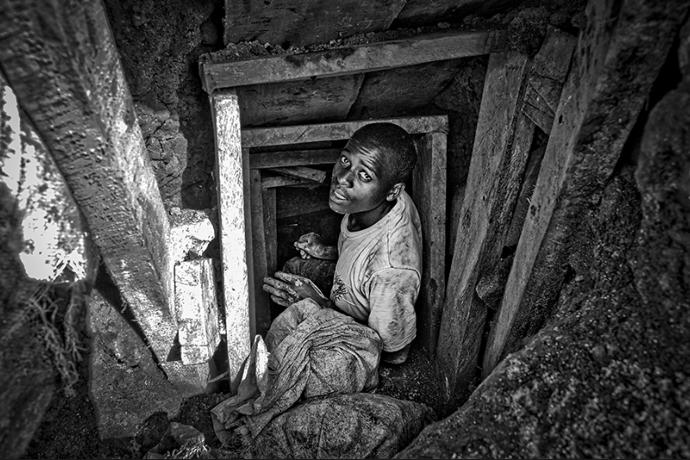
D.R.Congo. Mudere mine. Miner at work extracting manganite and coltan.
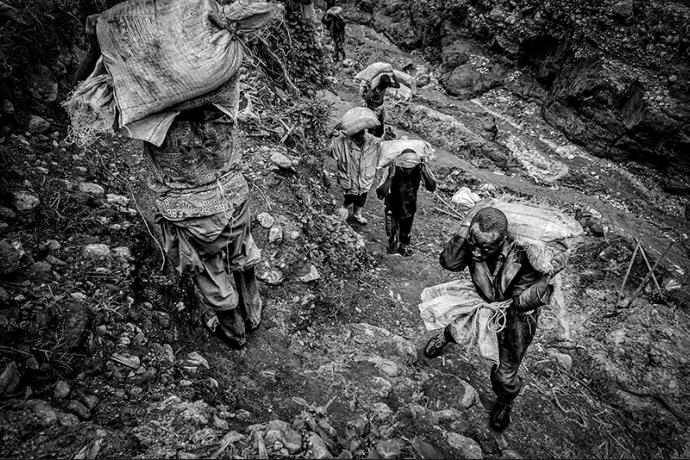
D.R.Congo. Workers carry bags of minerals from the Mudere mine to the small town of Rubaya.
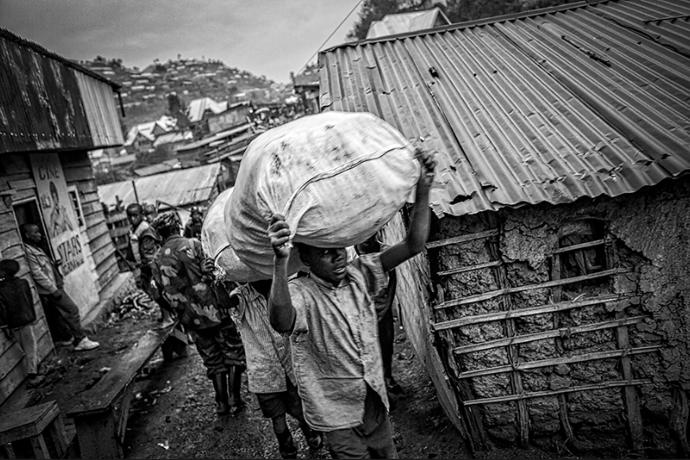
D.R.Congo. Minerals arrive in the small town of Rubaya.
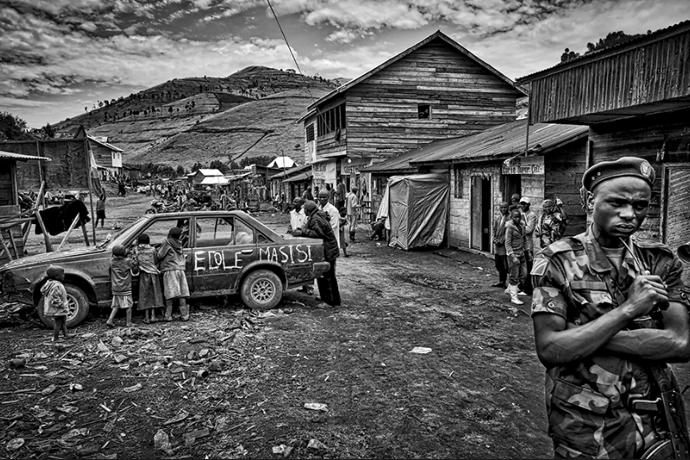
D.R.Congo. A view of Rubaya, a small town of miners, under the bloodthirsty control of Nyatura soldiers.
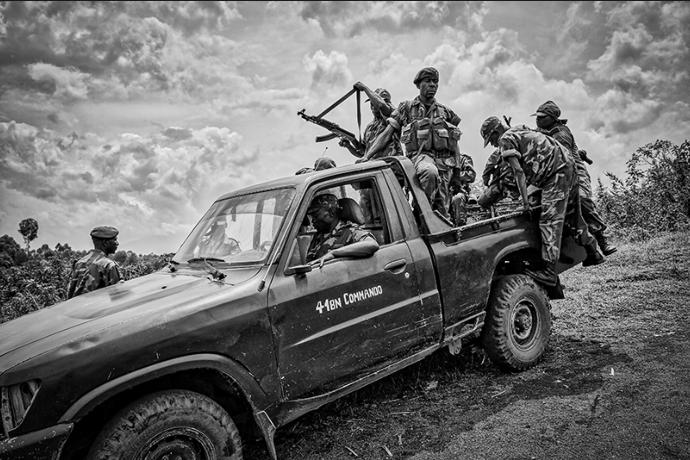
D.R.Congo. Nyatura soldiers ready to take a truck full of rare minerals from Rubaya, in D.R.Congo, to the market in
Rwanda.
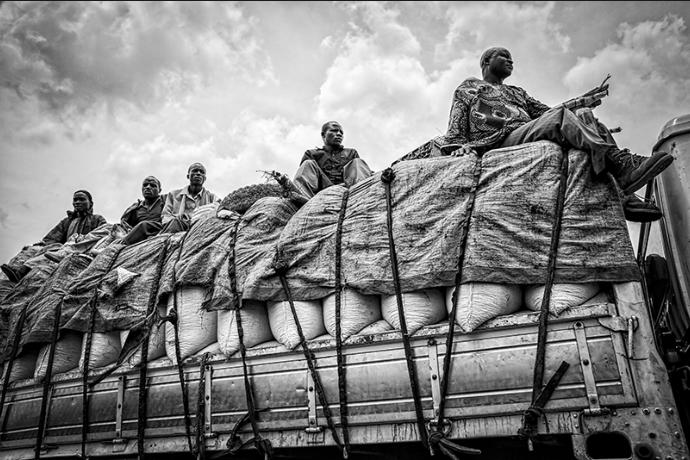
D.R.Congo. Truck full of minerals is ready to go directly in Rwanda, where will be sell as ‘Rwandese and not as ‘bloody
minerals from war zones’.

India. Bokahapadi. The people of Bokahapadi, are forced to steal coal from their own land in order to survive. Large,
national corporations have taken control of the area for industrial extraction.
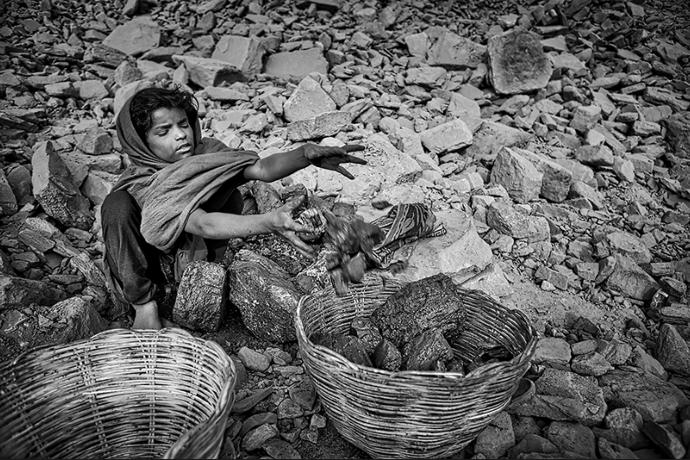
India. Bokahapadi. Many children are involved in the collection and transportation of coal. Used primarily for cooking,
heating, and to earn a little money by selling it, coal monopolizes every single activity of Bokahapadi’s inhabitants.
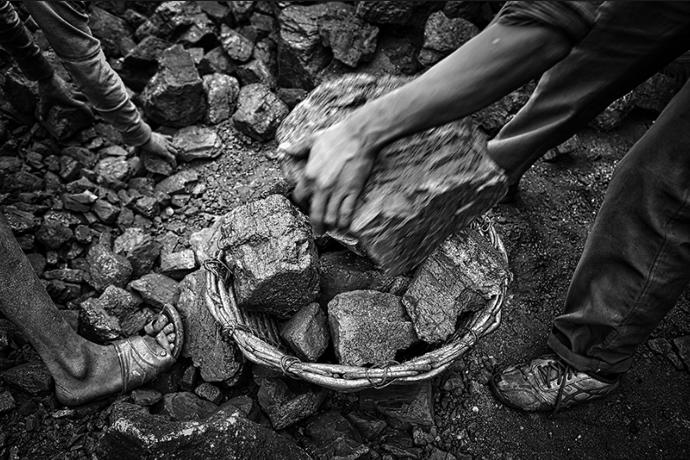
India. Bkahapadi. Despite the large numbers of people that extract baskets full of coal each day, the quantity taken is
very small, especially when compared to the hundreds of tons moved by the mechanical machines of the big industries.
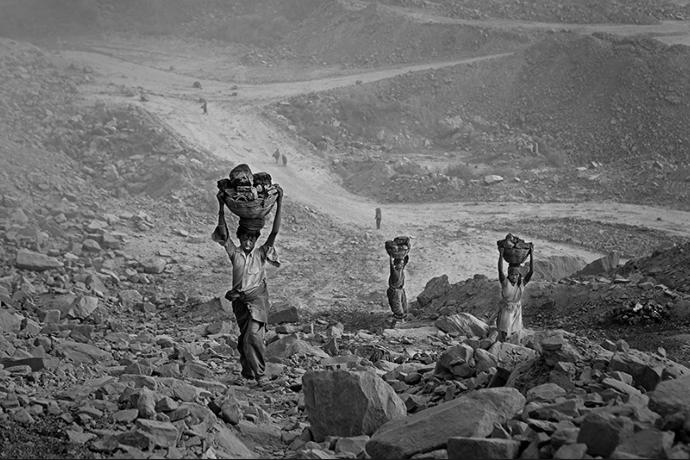
India. Bokahapadi. To the children of Bokanhapadi, coal extraction ir more important than school.
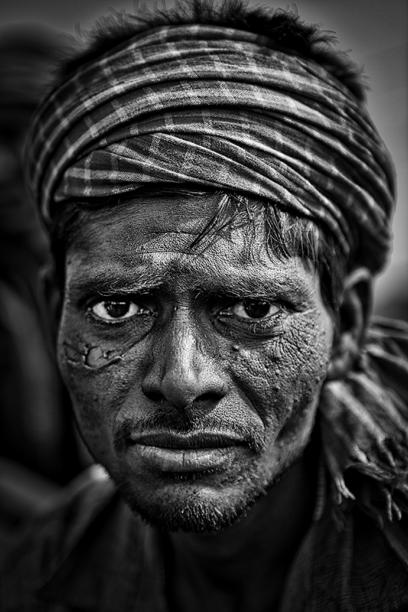
India. Bokahapadi. Portrait of a young miner.





